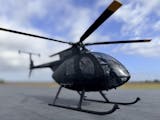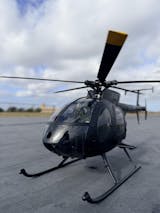Flying an
RC helicopter can be thrilling—but only when everything works properly. It can also be one of the most frustrating when things go wrong. A sudden flip on takeoff, an unexpected power drop mid-flight, or a tail rotor that refuses to cooperate can turn a perfect day into a crash-and-repair session.
To make this guide truly useful, we didn’t just write it from theory—we went deep into RC hobby forums, product reviews, and community discussions, gathering the 10 most common problems real pilots face.
These are issues that have frustrated both beginners and experienced flyers alike, and we’ve combined them with practical, tested solutions you can apply right away.
This RC helicopter troubleshooting guide is designed to help you:
- Identify problems quickly
- Understand the root cause
- Apply effective fixes without unnecessary trial and error
Quick Reference Table
| Problem |
Common Causes |
Quick Fix |
| Flight time too short |
Old/damaged LiPo, over-throttle, over-discharge |
Upgrade battery, avoid wind, land at 3.7V/cell |
| Crash on takeoff |
Gyro/FBL not calibrated, reversed servos |
Calibrate on flat surface, check servo directions |
| Unstable controls |
Loose linkages, high gyro gain |
Tighten linkages, reduce gyro gain |
| Mid-flight vibration |
Bent shaft, unbalanced blades |
Replace shafts, balance blades |
| Tail rotor failure |
Loose/broken belt, servo issue |
Adjust belt tension, replace faulty servo/motor |
| Binding issues |
Wrong protocol, bad bind process |
Match protocol, follow correct bind steps |
| GPS/FBL errors |
Bad compass calibration, uneven init surface |
Calibrate away from metal, power up level |
| Minor crash damage |
Brittle parts, hard landing |
Use reinforced parts, soft landing zone |
| Battery swelling |
Overcharge, deep discharge |
Use balance charger, avoid over-discharge |
| Hover drift |
Light model in wind, uneven swashplate |
Fly in calm, level swashplate |
-
RC helicopter flight time is too short
Symptoms: Your RC helicopter only manages 3–5 minutes of flight per charge, despite the battery specs promising 10+ minutes, leading to frequent interruptions in your sessions.
Possible Causes:
- An aged, low-quality, or damaged LiPo battery
- Aggressive flying styles, such as constant full throttle in windy conditions, can cause accelerating power drain.
- Over-discharging the battery below safe voltage limits
Step-by-Step Fixes:
- Upgrade to a high-capacity, branded LiPo battery rated for your model (e.g., 7.4V 1500mAh for mid-size helis)
- Avoid flying in wind over 5 mph; gusts force excessive motor compensation, spiking energy use.
- Monitor voltage with a checker; land immediately when it drops to 3.7V per cell to preserve battery health.

-
RC Helicopter Crashes on Takeoff
Symptoms: The helicopter jerks, tips over, or does a sudden flip the moment it leaves the ground.
Possible Causes:
- Gyro not calibrated or flybarless (FBL) system not initialized properly
- Reversed servos are causing incorrect swashplate movement
- Battery sag or a weak cell is causing unstable lift
Step-by-Step Fixes:
- Power up on a level surface and wait 5–10 seconds for the FBL system to self-level before moving the sticks
- Enter transmitter setup mode to test servo movements—ensure they align with stick inputs
- Charge battery to at least 4.1V/cell and avoid using old or swollen batteries
Pro Tip: Use a swashplate leveling tool for precision setup. Reference the Razordon Helicopters manual for model-specific calibration.
-
Unstable or Twitchy Controls
Symptoms: Your RC helicopter veers off course or reacts sharply to minimal stick input, making it difficult to control or hover.
Possible Causes:
- Loose ball links, sloppy servo arms, or bent linkage rods
- Excessive gyro gain is causing overcorrection
- Trims or subtrims are not centered properly
Step-by-Step Fixes:
- Manually inspect all physical linkages— Wiggle connections for play and replace any loose parts
- Lower gyro gain in small increments (5%) and test hover in a controlled space
- Center trims, then rebind the transmitter so the model recognizes the neutral position
-
Vibrations or Shaking Mid-Flight
Symptoms: Noticeable wobbling, buzzing sounds, or mid-air shaking that worsens with speed, common in RC helicopter vibration fix searches.
Possible Causes:
- Bent main rotor shaft or misaligned feathering shaft
- Rotor blades are unbalanced or tracking improperly
- Motor screws or frame bolts have loosened due to vibration
Step-by-Step Fixes:
- Spin the rotor slowly by hand and check if the blade tips follow the same path—if not, replace the shafts
- Use a blade balancer or apply small tape strips to the lighter blade to balance both sides
- Tighten all structural screws—especially around the rotor head and landing gear

-
Tail Rotor Failure or Spinning Out
Symptoms: Your RC helicopter yaws uncontrollably or can't maintain heading, especially during hover or throttle changes.
Possible Causes:
- The tail belt is loose, broken, or off the pulley (belt-drive models)
- Failing tail motor or electronic speed controller (ESC) in direct-drive models.
- The tail servo is slow, reversed, or binding
Step-by-Step Fixes:
- Remove canopy and inspect tail belt routing; tension should allow slight finger flex but no slippage
- Replace worn tail motors or test the ESC output with a servo tester
- Verify servo direction in setup and confirm smooth movement across the full tail pitch range

-
Binding Issues Between Helicopter and Transmitter
Symptoms: Your RC helicopter does not respond to your transmitter—no servo movement, no rotor spin, no LED confirmation.
Possible Causes:
- Wrong protocol (e.g., FlySky vs. Spektrum)
- Incorrect binding procedure or sequence errors
- Transmitter battery drain or environmental interference
Step-by-Step Fixes:
- Double-check your model's receiver protocol and match it with your transmitter settings
- Follow the correct bind sequence: usually power off both, enter bind mode on TX, power on heli, wait for the solid LED
- Replace or recharge transmitter batteries and ensure you're within a short binding range (1–3 ft)

-
GPS or Flybarless System Errors
Symptoms: Sudden tilting, loss of level hover, or aggressive auto-correction—especially after switching modes.
Possible Causes:
- GPS compass is not calibrated or magnetically interfered with
- Flybarless (FBL) controller is initialized on an uneven surface
- Mode switch glitches or signal noise
Step-by-Step Fixes:
- Calibrate the compass outdoors, away from metal objects or electronic devices.
- Power up on level ground and allow full gyro boot-up.
- Reassign mode switches in TX programming to prevent accidental flips.
-
Broken Parts After a Minor Crash
Symptoms: Tail boom cracks, landing skid snaps, or canopy detaches after light contact with the ground.
Possible Causes:
- Low-quality plastic components or brittle materials
- Hard landings on concrete or asphalt
- Loose screws or threadlocker not used on metal-to-metal joints
Step-by-Step Fixes:
- Use soft landing zones like grass or foam pads to reduce impact
- Replace broken parts with reinforced or aluminum upgrades
- Apply blue threadlocker to all metal screw joints to prevent vibration loosening

-
Battery Swelling or Overheating
Symptoms: Battery becomes puffy or hot to the touch after short flights, sometimes accompanied by power dips.
Possible Causes:
- Overcharging or charging without a balance charger
- Discharging below 3.3V/cell during flight
- Blocked airflow in the battery compartment
Step-by-Step Fixes:
- Use a quality LiPo balance charger and charge on non-flammable surfaces
- Set a timer or telemetry alarm to avoid deep discharges
- Add vent holes or fly with the canopy slightly open for airflow
Pro Tip: Dispose of swollen batteries safely via recycling programs. Reference LiPo safety from the Academy of Model Aeronautics (AMA).
This image is from electronoobs
-
Helicopter Drifts in Wind or Won’t Hover Steadily
Symptoms: Your helicopter slides off in one direction despite neutral sticks, especially outdoors.
Possible Causes:
- Model too light for wind conditions (common in indoor-rated helis)
- The gyro or swashplate is not level
- The tail rotor is underpowered or improperly trimmed
Step-by-Step Fixes:
- Fly on calm days with winds under 5 mph, or upgrade to a heavier model with GPS hold
- Use a swashplate leveling tool to ensure pitch balance
- Adjust the tail trim and ensure the tail rotor has a full range of motion

Conclusion
RC helicopter issues are inevitable, but with proactive troubleshooting, you can minimize downtime and maximize enjoyment. By identifying symptoms early and following clear diagnostic steps, you can solve most common problems without expensive repairs.
Make routine pre-flight checks a habit, fly in safe conditions, and don’t ignore strange noises or behaviors. A little maintenance goes a long way in protecting your RC helicopter—and your investment.
Need spare parts or setup help? Browse
Razordon's extensive spare parts collection or reach out to their support team.
You Might Also Like:













